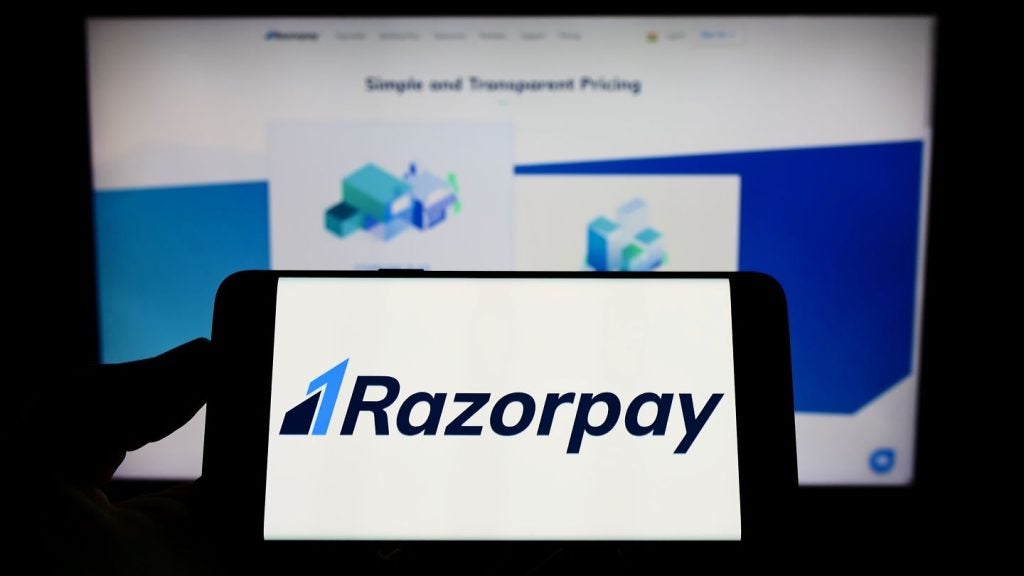Recent research by Italian payment processor SIA SSB
highlights the growing importance of mobile payments for Italian
consumers. However, despite positive consumer awareness and usage
levels, merchant adoption and levels of cooperation between
industry participants remain barriers to further growth. John Hill
reports.

Already a pioneer for new payment
technologies with its groundbreaking prepaid social benefits
programme, Italy is now set to lead the revolution in mobile
payments, according to payment processor SIA SSB.
Italy has led the rest of Europe in
the development and adoption of prepaid products, in stark contrast
to its Western European neighbours where prepaid is only just
beginning to gain traction.
The fact that prepaid card usage in
Italy has grown so rapidly in such a short space of time is all the
more surprising given the dominance that cash has enjoyed as a
payment method.

US Tariffs are shifting - will you react or anticipate?
Don’t let policy changes catch you off guard. Stay proactive with real-time data and expert analysis.
By GlobalDataMany developing areas of the globe
have a higher penetration of mobile phones than they do bank
accounts. Unsurprisingly, the spread of mobile payment services has
been rapid, helped in a large part by the wide availability of
mobile handsets that have not only become cheaper but more
sophisticated and with increased functionality.
There are an estimated 4.1bn mobile
handsets across the globe, and penetration has blossomed from
around 10% of the global population at the turn of the century to
just over 60% at the end of 2008.
Positive research
findings
SIA SSB recently conducted research
into the mobile payment market in Italy, the results of which were
remarkably positive. Gianluigi Rocca, marketing manager for cards
at SIA-SSB, explains more about exactly what the company found.
“The mobile payments research study
we recently participated in with the Observatory on NFC &
Mobile Payment of the Politecnico di Milano School of Management
was in general very positive toward the technology,” he told
CI.
“The research itself looked at both
remote mobile and proximity mobile payments and covered more than
200 mobile payment applications at international level, around 100
different services related to mobile payment channel in Italy, a
focus group and an extensive survey based on 1,500 consumers. Just
the increase in service numbers was around15% compared to 2008, so
you can definitely see a marked improvement in uptake, awareness
and enthusiasm for the technology.
“The main areas mobile payments are
used in Italy are parking, ticketing and mobile top up services.
From the point of views of the kind of technology used, the mobile
payment market is still dominated by SMS. In fact around 70% of
mobile payments are done using SMS.”
“However this number is a decrease
from 2008 of around 10%, which nicely illustrates that new services
are being delivered using new technologies. In particular,
technologies that use a data connection rose from 9% to 24% – an
increase in the range of 300%.”
“Within the data connection
demographic mobile java based applications increased by 100%,
making it the most popular in new systems.”
Merchant acceptance and user
approval are two of the main obstacles to the adoption of any sort
of technological innovation within the payments sphere. However,
according to Rocca, there is already a groundswell of support among
both merchants and users for mobile payments.
“For merchants there are two main
areas that illustrate their interest in mobile technology,” he
said.
“The first and most important area
is the interest in adoption shown by the larger distributors like
supermarkets, where in general they have shown a great desire to
adopt this technology as soon as it is available. In more than 70%
of those questioned by the research this was the case. Even more
popular than among supermarkets and large retailers was that of the
vending machine industry, where in more than 78% of the cases they
want to roll out the technology as quickly as possible.
“On the other hand, standard
merchants like corner shops and tobacconists demonstrated little
interest, with only around 29% of those spoken to showing interest
in the technology.”
Of the interested merchants, there
were two main reasons for their interest. One was to give better
services to their customers, at more than 70%, and the second, at
55%, was that they believed they could deliver a better process to
their customers.
“The combination is quite
important, as it means better services from the user point of view
and better processing from the merchant point of view,” Rocca
said.
“This provides another indicator
that as soon as the technology becomes available these kinds of
merchant will adopt it.”
Benefits for
merchants
The third area, and particularly
important for merchants, is the point of view of potential users of
mobile payments. More than 40% of the users interviewed said they
would adopt the technology and the technology would be invaluable
to them.
Of these it was most popular among
35 to 40 year-olds, with 47% of these cases saying they would adopt
it and it would be invaluable to them. On the other hand, only 15%
of the people interviewed said they would not adopt the technology.
Of those surveyed, users said they would use the technology mainly
in the supermarket, petrol station and for buying fashion
items.
“In some sense the merchants see
the benefits and so they have an opportunity to make an investment
on that,” Rocca added.
“On the other side, my feeling is
that any service that is available will be picked up by the users,
so from the point of view of using the right channel at the right
time, mobile is good for users, but from the point of view of the
users the idea is that they will use it as soon as the service is
available on mobile, so they will have a smaller impact on the
delivery of that.
“For that very reason, companies
that come out with a service will get good results because users
are waiting for it. The business case will again be an important
area to be evaluated for delivering services, both from corporate
and financial institutions.
“Both merchants and users will get
benefits from this, but the discussion is when new services will be
introduced, not if new services will be introduced.”
Following the seemingly high levels
of enthusiasm behind mobile payments, Rocca explains how several
pilot schemes have been and are being set up to test the systems in
a real-world environment.
“In order to corroborate the
findings from this research we agreed several pilot projects should
be set up,” Rocca said.
“One of the projects that have been
set up is ‘Aurora’. Aurora is the result of a combination of a
selection of different companies, including SIA SSB, and the goal
of this project is to understand whether there is a usage pattern
if you combine physical channels with mobile channels.
“What this means is that we are
experimenting with, for example, purchasing tickets for cinemas.
This involves allowing users to reserve their seats by means of
their mobile, internet or ATM, and then to get the ticket printed
either in any of these channels, the kiosk of the cinema, or even
get it digitally on their phone.
“This will then hopefully allow us
to understand the preferred channel various different features of
cinema access.”
Cooperation between
stakeholders
Any roll-out of mobile payment
technology on a large scale requires co-operation between telecom
companies, handset manufacturers and financial institutions. Rocca
believes that while this is currently not quite at the level
required for payment schemes to be truly successful, there is a lot
of progress in the area.
“Co-operation and partnership are
very important for any mobile initiative,” Rocca said.
“At the moment, this kind of
co-operation is in its infancy, and while everyone thinks
co-operation is important, usually there is a bilateral agreement
by banking institutions and tech operators when there is something
relating to financial payments. This approach is growing in
importance and we will see more in 2010.
“Collaboration will become more
evident not for bilateral agreements, because as the number of
mobile services has grown, so has the interest, and yet there is no
standard agreement on how these collaborations could progress.
“This is a matter of discussion and
an opportunity for growth, because we believe in mobile technology
and so we are really pushing the level of co-operation between
different partners in different sectors, hopefully to provide a
base for the take-up of mobile payments in general across
Italy.
“So while we think it is likely we
will see something more in 2010, at the moment the telco operators
are not enormously active, but are certainly starting to do
something.”
Although the current government
prepaid benefits scheme has proven such a success, Rocca thinks it
is hard to tell whether there would be any scope in the future for
a similar scheme using mobile technology, although he agrees money
transfer and remittance is a very important aspect of any mobile
roll-out.
“The idea is that generally
speaking mobile will be a channel for delivering additional
services, and although at the moment the Italian government in
general is devoted to making payment and dispersion an electronic
process, they are currently concentrating more on advancing prepaid
as a way of doing this,” Rocca said.
“However this is the first step, so
it is hard to tell what they will do in the future. Having said
that, there is certainly a good relationship between prepaid and
mobile technology, so it is a possibility.
“In Italy there is a large campaign
by MasterCard regarding the adoption of contactless payment with
Milan as the preferred city for that.
“From a mobile proximity payment
[contactless] point of view, there is very little going on at the
moment and we only have one trial going on at the moment in Italy,
although there will most likely be several more in 2010.
“The majority of mobile payments
are related to mobile remote payments and not proximity payments,
and on the whole the technology is still in its infancy.
“Money transfer is very important
from a person-to-person [p2p] point of view. For instance, look at
something like PayPal, and mobile will certainly be an additional
channel that will help in the p2p evolution. Regarding remittances,
it is an important area in which many banking institutions are not
playing the right role.
“Many banks are not investing in
that area at all and others are only investing partially, and it
should actually be an area where they start investing more, and
start taking an increasingly important role.”
As a final point, Rocca points out
that despite the enthusiasm behind new payment schemes, credit
cards are still the most popular payment method, although their
market domination is slowly being eroded.
“Another result presented by the
research was that the credit card is still the most important
payment device, even though the percentage is going down,” he
said.
“Currently in the 45% of the cases
evaluated, people would use their credit card to pay, although this
is down from 51% in 2008.
“The research also showed that
prepaid cards are very important and the%age of services which
allow people to use the prepaid card as a payment method went from
7% in 2008 to 21% in 2009, a 300% increase.
“This is a solid confirmation of the fact that in Italy prepaid
is an important tool for payment, and also an important tool for
payment from a mobile point of view.”








